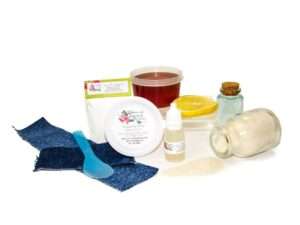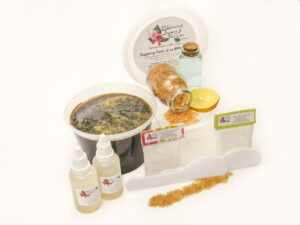👑 The Long History of Sugaring
From Ancient Egyptian Queens to Modern Beauty
Journey through 4,000 years of beauty secrets, from Cleopatra's royal treatments to today's natural hair removal revolution. Discover why this ancient art has stood the test of time.
🕰️ A 4,000-Year Journey
Sugaring isn't just a beauty trend—it's a time-tested tradition that has graced the skin of queens, empresses, and beauty enthusiasts across millennia. Let's explore this fascinating history together.
Pre-Historic Era: The Dawn of Hair Removal
Cavemen used flint razors to shave their faces, while women created the first depilatory creams using harmful substances like quicklime and arsenic. Hair removal was dangerous and often resulted in skin damage—but the desire for smooth skin was already deeply human.
Ancient Egypt: The Birth of Sugaring
The sugaring method dates to ancient times around 1900 B.C. in Egypt. Egyptian women removed all body hair using pumice stones, seashells for tweezing, threading, beeswax, and the revolutionary early sugaring methods. Body hair was considered unacceptable and unclean—smooth skin was a symbol of purity and high status.
Roman Empire: Hair Removal as Status Symbol
Early Romans viewed lack of body hair as a symbol of high-class citizens. Paintings and sculptures reveal that even pubic hair was removed. Romans used flint razors, tweezers, creams, and stones—but the wealthy had access to the gentler sugaring methods imported from Egypt.
Middle Eastern Mastery
Sugaring flourished across the Middle East and North Africa. Known as sukkar in Egypt, ağda in Turkey, and moum in Iran, each culture perfected their own techniques. The method spread through Arabic and Persian cultures, becoming an essential part of beauty rituals.
Sugaring Reaches the West
In 1984, sugaring was brought to the United Kingdom, marking its entry into Western beauty culture. From there, it spread across Europe and eventually to North America, where it began evolving dramatically.
Europe - Middle Ages: The Bald Beauty Ideal
In the Early Middle Ages, women practiced removal of all body, face and even head hair. Bald heads allowed them to wear gaudy wigs or headpieces, which were in fashion at the time. The routine was arduous—shaving and plucking was done daily to maintain the look.
Queen Elizabeth I: The High Forehead Trend
Queen Elizabeth I made facial hair removal fashionable for European women during her rule. The trend was removal of eyebrows and forehead hair to make the forehead appear larger—a sign of intelligence and nobility.
Middle East: Sacred Wedding Traditions
Middle Eastern women have long practiced body sugaring as a sacred ritual. It was customary for brides to remove all body hair except eyebrows and head hair the night before their wedding—an act of respect for the husband, as hairless skin was thought to be clean and pure.
North America: The Gillette Revolution
Following a Harper's Bazaar ad featuring a model in a sleeveless gown with hairless armpits, Gillette introduced the first razor for women in 1915. This commenced the hairless craze in the US, supported by advertisements encouraging women to remove body hair.
1940s: Mechanical Devices
Replaced abrasive mitts and primitive methods
1960s-80s: Wax Era
Strip wax (60s), then hot wax (80s)
The Technology Boom
The 1990s and 2000s brought us electrolysis and laser removal methods, which have exploded into multi-million dollar industries. Despite all this technology, many are returning to ancient, natural methods.
Brazil: The Coco de Mono Tradition
The infamous Brazilian bikini wax originated in a country where women begin removing body hair at age 15. Traditionally, Brazilians used a natural substance found in the Coco de Mono tree, though today cold wax is more common.
Full Circle: Back to Nature
After centuries of chemical experiments and technological advances, we're returning to what ancient civilizations knew all along—natural sugaring is the gentlest, most effective method.
🎭 Strip-Removal Method
Modern adaptation using cloth strips
🤲 Traditional Hand Method
Ancient technique, still the gentlest
🔬 Why Ancient Wisdom Still Wins
Original Formula
Before sugar was widely available, honey was likely the first sugaring agent. Sugar was confined to Papua New Guinea until the first millennium AD, making honey the original natural hair removal solution.
Natural Healing
Ancient Egyptians discovered that sugaring not only removed hair but also exfoliated skin, leaving it smoother and more supple without stubble or irritation.
Progressive Results
Hair regrowth became softer and finer over time, making sugaring a preferred long-term solution that improved with each treatment.
Medicinal Origins
Sugaring may have been discovered when sugar paste was used to treat wounds and prevent infections—the hair removal was a beneficial side effect!
🌍 A Global Beauty Heritage
Sugaring has been discovered and rediscovered across cultures, proving that the desire for natural, effective hair removal is truly universal.
🏺 Ancient Egypt & North Africa
The birthplace of sugaring, where it was perfected in royal courts and became a symbol of cleanliness and status.
🌙 Middle East & Persia
Where sugaring techniques were refined and given beautiful names like sukkar, ağda, and moum.
🏛️ Mediterranean & Roman Empire
Where sugaring became a luxury treatment for the wealthy and a symbol of high social status.
🌿 Modern Western World
Where ancient techniques meet modern innovation, creating new methods while honoring traditional wisdom.
📚 Historical Sources
Primary Source: Milady's Hair Removal Techniques
Additional Research: Vida Sleek - A Brief History of Body Hair
This comprehensive history draws from archaeological evidence, historical texts, and cultural documentation spanning over 4,000 years of beauty practices across civilizations.
🌟 Experience Ancient Wisdom Today
From Cleopatra's royal treatments to your modern beauty routine—discover why sugaring has remained the gold standard for natural hair removal across millennia.







